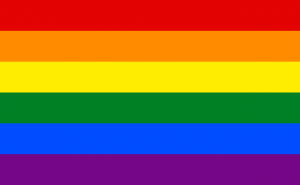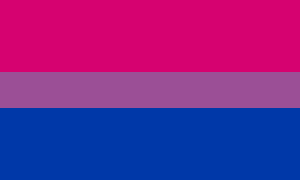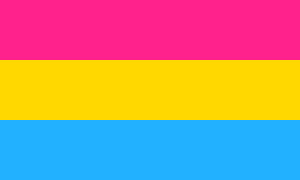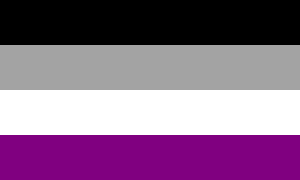GAY PRIDE FLAG
The rainbow flag, commonly known as the gay pride flag or LGBT pride flag, is a symbol of pride for lesbian, gay, bisexual, transgender, and generally queer people. The flag contains all seven colours of the rainbow in order.
Each of the colours on the flag have a significant meaning: red meaning life; orange meaning healing; yellow meaning sunlight; green meaning nature; blue meaning harmony; and purple meaning spirit.
This flag has been popular since 1978.
LESBIAN PRIDE FLAG
The lesbian pride flag has many variations and no specific one has been widely used yet. This version of the flag has six stripes in shades of orange and pink, and one white stripe in the middle.
A Tumblr blogger named Emily Gwen created this version of the flag to have seven stripes, and each of the colours had a significant meaning: dark orange meaning gender non-conformity; orange meaning independence; light orange meaning community; white meaning unique relationships to womanhood; pink meaning peace; dusty pink meaning love; and dark pink meaning femininity.
This flag has been popular since 2018.
BISEXUAL PRIDE FLAG
The bisexual pride flag was designed by Michael Page who wanted to increase the visibility of bisexuals in the LGBT community. The flag contains a wide pink stripe at the top, followed by a narrow purple stripe and a wide dark blue stripe at the end.
Each of the colours on the flag have a significant meaning: pink representing attraction to the same gender only; blue representing attraction to the opposite gender only; and purple representing the overlap of both of the colours to symbolize attraction to both.
The meaning behind the colours of the flag is still relevant and used, however the definition of bisexuality has changed and now commonly includes the attraction to genders other than male and female.
This flag has been popular since 1998.
PANSEXUAL PRIDE FLAG
The pansexual pride flag contains three stripes that are pink, yellow, and blue respectively.
Like all the other flags, the colours of this flag have a significant meaning: pink representing women; blue representing men; and yellow representing people of another gender, such as non-binary, bigender, genderfluid, etc.
This flag has been popular since 2010.
ASEXUAL PRIDE FLAG
The asexual pride flag was created by an AVEN (Asexuality Visibility and Education Network) user back in 2010. The flag has four stripes: black, grey, white, and purple
Each of the colours of the flag have a significant meaning: black representing asexuality; grey representing gray-aces and demisexuals; white representing allies; and purple represents community.
This flag has been popular since 2010.
There are many other flags, such as the demisexual and the aromantic flag as well, but these are the most well-known ones.
(IDEA CREDITS GO TO AASMI)




